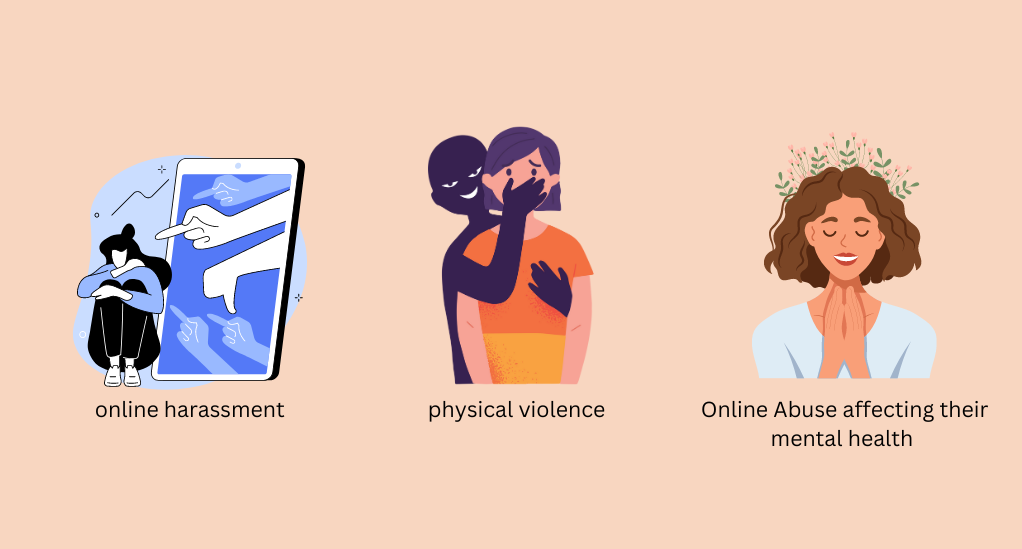The Unaddressed Flaws of Online Safety Technology in Protecting Women
In the digital age, the internet has become a ubiquitous part of our daily lives, offering a plethora of opportunities for learning, communication, and business. However, it has also opened up new avenues for harassment, abuse, and discrimination, particularly against women. This article delves deep into the pressing issue of the gender gap in online safety measures and explores the various facets of how the current technology is failing women.

The Importance of Online Safety
Online safety is not just a matter of protecting one’s personal information but extends to safeguarding individuals from harassment, cyberbullying, and other forms of online abuse. For women, the stakes are even higher. The internet, which should be a space of equal opportunity and freedom, often turns into a platform where they are disproportionately targeted, harassed, and abused. Understanding the gravity of this issue is the first step towards fostering a safer online environment for everyone.
The Gender Gap in Online Safety Measures
Despite the advancements in technology, there exists a significant gender gap in online safety measures. Women are more likely to be victims of online harassment, including stalking, sexual harassment, and hate speech. This gap is not just a result of the increased frequency of attacks against women but also stems from the inadequacies of current safety technologies which often overlook the unique challenges faced by women.
Historical Perspective
To comprehend the current scenario, it is essential to look back at the historical perspective of online safety. Initially, the internet was perceived as a neutral space, free from the biases and prejudices of the physical world. However, as it evolved, it mirrored the societal norms and discriminations, including gender biases.
The Evolution of Online Safety Technology
Online safety technology has come a long way from simple password protections to advanced algorithms detecting harmful content. However, these technologies have often been developed without considering the gender-specific threats and abuses that women face online. This has led to a significant gap in the protection offered to women on the internet.
Early Warning Signs of Gender Disparity
The early warning signs of gender disparity in online safety were evident from the initial stages of the internet’s growth. Women have been reporting higher rates of online harassment and abuse compared to men. Despite these warnings, little has been done to address the specific safety needs of women online.
Current Scenario
In the current scenario, the gender disparity in online safety has reached alarming levels. The next sections will delve deeper into the statistics, case studies, and technological shortcomings that highlight the gravity of this issue.

Statistics: Online Harassment and Abuse Faced by Women
- Prevalence: A significant percentage of women have experienced some form of online harassment or abuse.
- Severity: The severity of the abuse faced by women tends to be higher, with many experiencing threats of physical violence or sexual harassment.
- Impact: The impact of online harassment on women is profound, affecting their mental health and participation in online spaces.
Technological Shortcomings
The current technology has several shortcomings when it comes to protecting women online. These include:
- Inadequate Reporting Mechanisms: Many platforms lack robust reporting mechanisms that allow women to report harassment effectively.
- Gender Bias in Algorithmic Solutions: Algorithms often fail to detect gender-based harassment, as they are not trained to recognize the nuances of such abuse.
- Lack of Female Representation in Tech Development: The underrepresentation of women in tech development leads to a lack of understanding and consideration of gender-specific issues in online safety technology.
The Psychological Impact
The psychological impact of online harassment on women is profound. The next sections will explore the toll on mental health and the chilling effect on women’s online participation.
The Toll on Mental Health
Online harassment takes a significant toll on women’s mental health, leading to anxiety, depression, and even suicidal thoughts.
The Chilling Effect on Women’s Online Participation
The fear of harassment and abuse has a chilling effect on women’s participation in online spaces, limiting their freedom of expression and opportunities for growth.
Towards a Safer Future
As we move towards a safer future, it is imperative to address the gender gap in online safety measures. The next sections will explore the initiatives and movements aimed at creating a safer online space for women and the expert opinions on what needs to change.
Conclusion
As we stand at the crossroads of technology and society, it is our collective responsibility to ensure that the internet is a safe space for everyone, irrespective of their gender. Addressing the gender gap in online safety measures is not just a matter of justice but a necessity for fostering a healthy and inclusive online community.


Leave a Reply